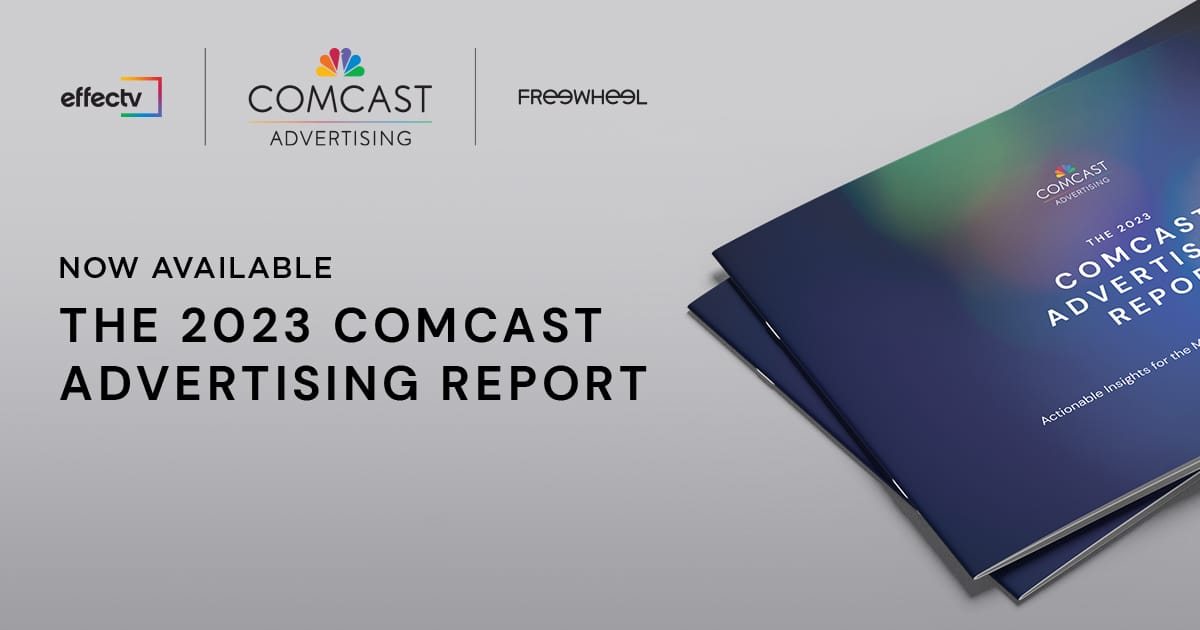Effectv Sponsored Content
Advertisers today face many difficult choices. In-house or agency? Manual or automated? First-party data or third-party data?
New data reveals the ideal balance of linear TV and streaming advertising to achieve maximum campaign reach.
One of the most challenging choices is how to make the most of video advertising – that is, how to balance traditional linear TV with streaming. New data uncovers the importance of incorporating both strategies into an effective media plan, as well as the right budget allocation to drive the best results.
The reality is that many beliefs about TV and streaming are simply myths and proven false when diving into the numbers. Regardless of your stance on TV versus streaming, reading this data from a recent TV Viewership Report published by Effectv may change the way you plan your next video advertising campaign.
In an analysis of over 20,000 campaigns from the second half of 2021, we found that advertisers who employ both streaming and TV see the best success, regardless of spend level or brand category. More specifically, campaign reach is highest when 20-30% of a campaign investment is allocated to streaming.
Adding streaming to a TV campaign or adding TV to a streaming campaign drives additional reach among unexposed audiences, proving it is a valuable combination. In fact, 37% of streaming impressions went to “light” or “no TV” households – in other words, households that most likely would not have otherwise seen the ad or would have only seen it sporadically on TV.
If you think TV and streaming serve different audiences…consider this.
Despite this compelling evidence that TV and streaming work best together, myths and misinformation are holding some advertisers back. And, although both TV ad spending and Streaming ad spending are expected to grow this year, there are still advertisers who feel strongly that one is “better” than the other. TV traditionalists believe that streaming ads are reaching only young people on a tiny screen, and that nearly all streaming is ad-free. On the other hand, streaming mavericks believe TV is past its heyday, or that no one is watching traditional linear channels in today’s on-demand world.
And if you worry that only young people are watching streaming, it turns out mom and dad are watching, too. According to a new study of streaming households, adults over 35 spend more time with streaming video than those under 35.
If you think TV is no longer relevant…consider this
TV continues to be one of the most effective ways to reach large audiences of all ages. In fact, in the second half of 2021, viewers spent an average of more than 6 hours per day watching TV, with 88% of time spent with live TV. And, while it’s true that “cord cutters” do exist in the U.S., 70% of households that watch streaming also subscribe to cable. In fact, among households that watch streaming, 61% of their viewing time is spent with cable or broadcast TV.
All of this means that TV is still an important reach vehicle for advertisers. Here’s why: According to an analysis of over 20,000 multiplatform ad campaigns with at least 40% of the spend allocated to streaming, TV exclusively accounted for two-thirds of the total campaign reach – proving that TV is still the best way to reach a large audience in a short amount of time.
If you think streaming isn’t effective…consider this
“Streaming viewing has grown 266% over the past three years, completely transforming the entertainment, publishing and advertising industries,” said Keith Zubchevich, CEO, Conviva.
Some advertisers worry that streaming ads are too often watched on mobile phones or tablets on the go, where it might be difficult to capture the viewer’s attention. The reality is that streaming via a connected device offers the same lean-back experience as traditional TV, with 76% of streaming impressions seen on the TV screen.
“Advertisers must constantly evaluate their approach to TV advertising, including adjusting schedules based on new viewership trends, changing creative to align to the current environment, and using always-on performance metrics and KPIs”, said Matt Cox, director of sales for Southern Virginia at Effectv. “Our team continuously optimizes campaigns to align with the advertiser’s objectives wherever and however the audience consumes their video content.”
Finally, it’s not just about paid subscriptions with no commercial availability! You may be surprised to learn that over half of all streaming time is spent with ad-supported content. Sounds like a pretty good bet for advertisers.
With all of this in mind, when asked the question of whether your next advertising campaign should include linear TV or streaming, the answer should be yes.
Want to learn more?
Download a recent report, A Powerful Duo: The Linear + Streaming Evolution.
Matt Cox is the director of sales for Southern Virginia at Effectv, the advertising sales division of Comcast. Effectv helps local, regional and national advertisers grow their business with multi-screen marketing solutions and is a proud AMA Richmond sponsor.


